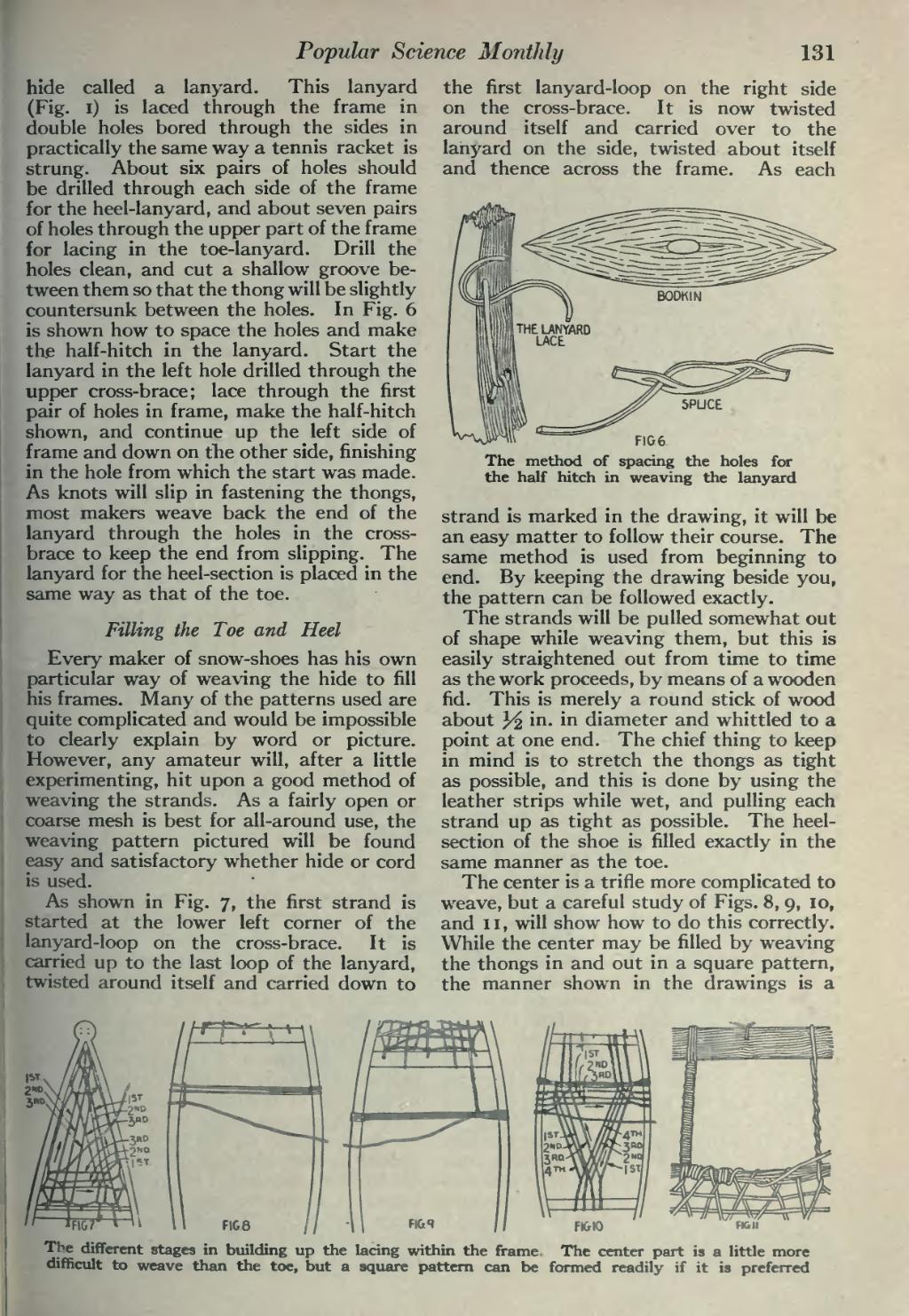Popular Science Monthly
��131
��hide called a lanyard. This lanyard (Fig. i) is laced through the frame in double holes bored through the sides in practically the same way a tennis racket is strung. About six pairs of holes should be drilled through each side of the frame for the heel-lanyard, and about seven pairs of holes through the upper part of the frame for lacing in the toe-lanyard. Drill the holes clean, and cut a shallow groove be- tween them so that the thong will be slightly countersunk between the holes. In Fig. 6 is shown how to space the holes and make the half-hitch in the lanyard. Start the lanyard in the left hole drilled through the upper cross-brace; lace through the first pair of holes in frame, make the half-hitch shown, and continue up the left side of frame and down on the other side, finishing in the hole from which the start was made. As knots will slip in fastening the thongs, most makers weave back the end of the lanyard through the holes in the cross- brace to keep the end from slipping. The lanyard for the heel-section is placed in the same way as that of the toe.
Filling the Toe and Heel
Every maker of snow-shoes has his own particular way of weaving the hide to fill his frames. Many of the patterns used are quite complicated and would be impossible to clearly explain by word or picture. However, any amateur will, after a little experimenting, hit upon a good method of weaving the strands. As a fairly open or coarse mesh is best for all-around use, the weaving pattern pictured will be found easy and satisfactory whether hide or cord is used.
As shown in Fig. 7, the first strand is started at the lower left corner of the lanyard-loop on the cross-brace. It is carried up to the last loop of the lanyard, twisted around itself and carried down to
��the first lanyard-loop on the right side on the cross-brace. It is now twisted around itself and carried over to the lah^^ard on the side, twisted about itself and thence across the frame. As each
���FIG6
��The method of spacing the holes for the half hitch in weaving the lanyard
strand is marked in the drawing, it will be an easy matter to follow their course. The same method is used from beginning to end. By keeping the drawing beside you, the pattern can be followed exactly.
The strands will be pulled somewhat out of shape while weaving them, but this is easily straightened out from time to time as the work proceeds, by means of a wooden fid. This is merely a round stick of wood about 3^ in. in diameter and whittled to a point at one end. The chief thing to keep in mind is to stretch the thongs as tight as possible, and this is done by using the leather strips while wet, and pulling each strand up as tight as possible. The heel- section of the shoe is filled exactly in the same manner as the toe.
The center is a trifle more complicated to weave, but a careful study of Figs. 8, 9, 10, and 1 1 , will show how to do this correctly. While the center may be filled by weaving the thongs in and out in a square pattern, the manner shown in the drawings is a
���The different stages in building up the lacing within the frame. The center part is a little more difficult to weave than the toe, but a square pattern can be formed readily if it is preferred
�� �
